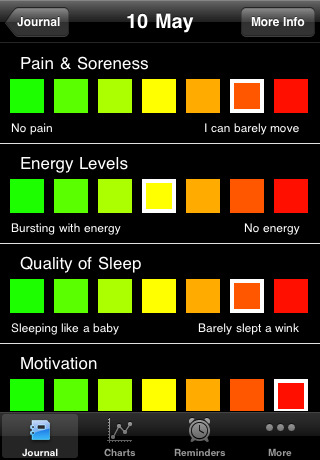In part 1, you learned about the four pillars of health and fitness.
1. Muscle and Joint (Musculoskeletal)
2. Cardiovascular and Pulmonary systems
3. Dietary Habits
4.Mental Well-being
You also became aware of self-efficiency and how it relates to your perception of health. By now, you should have a better understanding of your internal beliefs, perceptions, and how they relate.
In this article, you will be examining your external perceptions and understanding how they may be adversely impacting your health.

In this article you will be understanding you external perceptions and how they may be adversely impacting your health. In addition to discovering what can be done about it. Remember that the best indicator of how much control you have over your health is how much control you believe you believe you have.
The test used in this article is from Dr Frank Lawlis (Jeanne Achterberg and G.Frank Lawlis, The Health Attribution Test, Champain, III.: IPAT 1979). As a reminder this is a three part series covering the entire health attribution test. In part 1, we examined internal health perceptions, this time we are examining external health perceptions; and in part three we will be examining chance health perceptions.
External Health Perception.
External health perceptions are important to be aware of so that you become more empowered and accountable toward your health. Having the idea that you are going to be healed by your Doctor can lead to disappointment and the inability to create coping strategies.
Remember that accountability counts. A lack of self-accountability means that you are allowing yourself to become a victim. If you are overweight, you are accountable, if you have lower back pain, you are accountable, and so the list goes. If it’s something you have no control over then you are accountable for doing all you can to minimize future risks. By understanding you perception of dependence on others, you may stop relying on others to resolve your health predicament.

Identifying your External health perception.
For each of the following mark the most appropriate answer. Do this in private and be honest with yourself, knowing that you won’t be judged.
Score from 0-10: 0 being no confidence, and 10 being maximum confidence.
- My belief that my Doctor will heal me.
- My belief in medicines to heal my body and mind.
- My belief that if I follow all instructions given to me by my health care professional, I will be healed.
- My belief in the concept that if I have faith in my religious symbols of teaching, I will be healed by my spiritual power.
- My belief in the healing power of my friends and family as crucial to healing my body and mind.
Scoring Your External Health Perception
0-20: Low Confidence in others as healing agents.
21-30: Average Confidence in others as healing agents.
31-40: High Confidence in others as healing agents.
41-50: Very high confidence in others as healing agents.
Understanding your score.
If you have a high of average score you may be highly dependent on other people or influences to get you out of health troubles. You may believe that someone or something is the holy grail of health. This leads you to believe that your doctor has magic hands, your specialist has the magic technique, or your spiritual leader has the secret formula to prayer. In other words you are totally convinced they, the individuals and their methods, will work.
There is an upside to having a high score. You may be more likely to reach out for professional care, supported or trusted expertise. If this sounds like you, make sure you choose your health care professional wisely. As a health care professional, I can personally say that people presenting with higher score in this area are typically more compliant with rehab regimes. In other words you may be a doctors “perfect-patient.”

The downside is that you may lack healthy skepticism regarding the promises of a magic cure. No one is better at managing your health than you. Remaining inactive and passive toward your wellbeing creates a victim mentality, whereas being in control and accountable, helps you to take ownership. In the long run, maintaining such ownership increases your chances of success. Be responsible and take control now, without blaming others. I acknowledge that this may sometimes be difficult. If you have bad knees, or if you are overweight and under-active, then you need to address the contributing factors. If you believe that you are genetically predisposed to certain medical issues, then you have an even higher onus to live a lifestyle that minimizes your elevated risks. Cigarettes, alcohol, stress, your job, in-laws, none of them are to blame. Your own choices and actions are! Be accountable and active in influencing your wellbeing.
In regards to lower scores, the upside is an “I can do it myself” attitude. While foolish pride isn’t the answer, a rebellion against authority isn’t necessarily a bad thing. An example is the biomedical model for lumbar pain. Advanced imagery, surgery, bed rest, and narcotics aren’t necessarily the problem, let alone even beneficial!
The downside of a low score is that you probably don’t trust anyone or believe that anything will work, in parallel, you may be overly skeptical toward the health care profession. Therefore, you may not seek treatment because you are not convinced it will help. You are “the glass is half empty” type. Unfortunately, that won’t solve health challenges.

In the next part of this series we will test your chance perception of health. If you are comfortable with it, leave your score and comments below.























